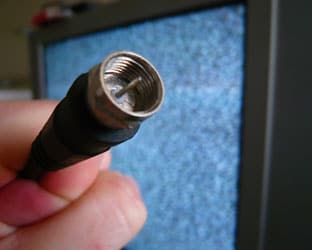 The incentive auction of television spectrum is moving forward to make sure Americans are able to get more and more use out of their mobile devices. But a look at the issue by MIT Technology Review suggests that new devices and spectrum management strategies are eliminating the need.
The incentive auction of television spectrum is moving forward to make sure Americans are able to get more and more use out of their mobile devices. But a look at the issue by MIT Technology Review suggests that new devices and spectrum management strategies are eliminating the need.
David Talbot says that maybe the need seemed more acute two years ago, but good old American know-how and innovation has been reducing the amount of spectrum needed to perform certain functions.
Furthermore, Talbot notes the underutilization of a great deal of spectrum, and the fact that some of it isn’t being used because it is being hoarded.
As an example, Talbot notes how wireless companies can manage traffic at a crowded event such as a professional sports contest. Wi-fi receivers no larger than a milk carton can be installed in a stadium. He explains, “The boxes mop up traffic from choke points like stadiums and train stations and send it directly to fiber backhaul, putting no demand whatsoever on the cellular network.and send it to, handling a large volume without clogging cellular frequencies.”
The unused gaps between television stations in a given local market are one example of underutilized spectrum – these are the white spaces that have been increasingly put to use carrying signals from unlicensed spectrum devices.
But Talbot also notes that many companies have stockpiled spectrum which they have never gotten around to developing.
Talbot quotes former MIT professor and current Microsoft exec David Tennenhouse, who sums it all up: “We don’t have a spectrum crunch so much as we have a spectrum policy crunch. The so-called ‘spectrum crunch’ really reflects artificial spectrum scarcity.”
RBR-TVBR observation: This is unlikely to throw the brakes on the auctions – as we’ve noted, that train is out of the station and it’s really hard to stop a train once it’s in motion. But broadcasters have worried about the possibility of government coercion in the event that not enough television stations “volunteer” to give up their spectrum.
If innovators are working toward eliminating the crunch on the tech side, and regulators can work on freeing up other underutilized bands of spectrum, there should be less pressure on broadcasters and no need for more draconian government approaches to freeing up television spectrum.
We certainly hope it plays out along these lines, because we have not heard of any established broadcast groups that intend to participate widely in the auction program.





